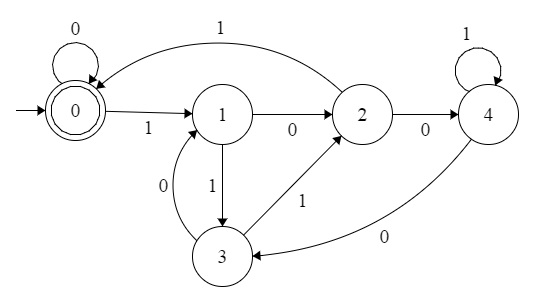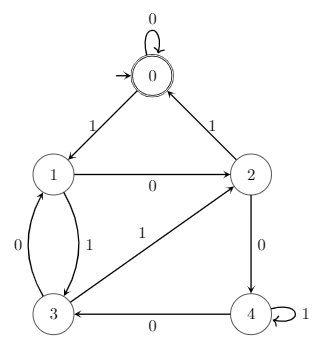Suppose we have decimal no $3$ after that we get a symbol $2$ . it becomes $32$ as $3 x 10 +2 = 32 $
In binary if we have $10$ ( i.e $2$ in decimal say old no) and after that we get symbol $1$ it become $101$( i.e $5$ in decimal say new no )
$ 2$ (old no.) $ \times 2$( base) $+1$( input symbol) $= 5$ (new no.)
Now in the given problem, binary no is divisible by $5$ , i.e $0,101,1010,1111..... $
We need $5$ states in DFA , $0,1,2,3$ and $4$ .Each state represent remainder that comes when we divide no by $5$.
Input symbol $=\{0,1\}$
We get the transition:
[Old state $\times$ base $+$ input symbol] mod $5 =$ New state , where base is $2$
$[0 \times 2 + 0]mod \ 5 = 0$ $[1 \times 2 + 0]mod \ 5 = 2$ $[2 \times 2 + 0]mod \ 5 = 4$
$[0 \times 2 + 1]mod \ 5 = 1$ $[1 \times 2 + 1]mod \ 5 = 3$ $[2 \times 2 + 1]mod \ 5 = 0$
$[3 \times 2 + 0]mod \ 5 = 1$ $[4 \times 2 + 0]mod \ 5 = 3$
$[3 \times 2 + 1]mod \ 5 = 2$ $[4 \times 2 + 1]mod \ 5 = 4 $

